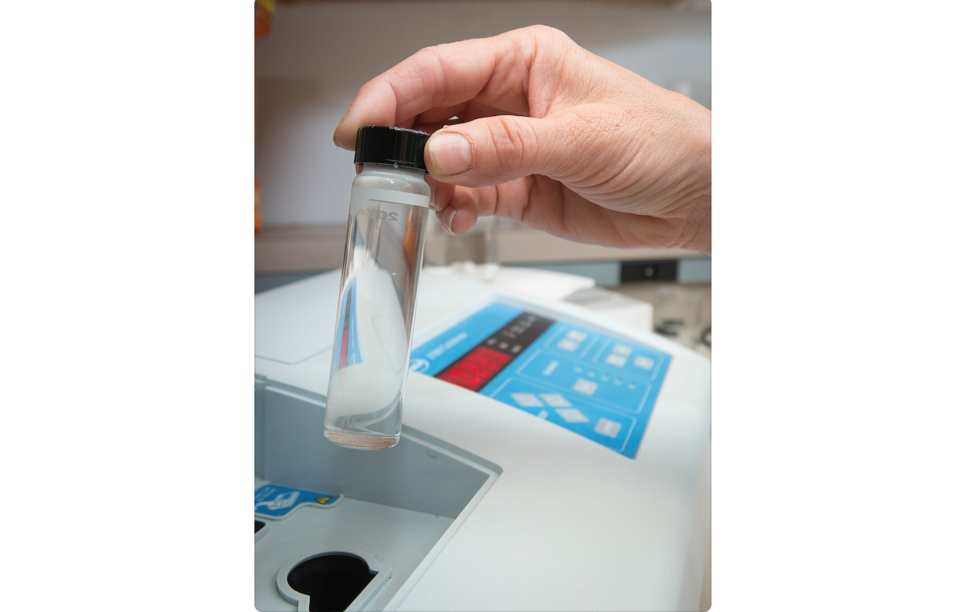BONNYVILLE – Understanding the origin of phosphorus and other nutrient loading taking place in Moose Lake will become a whole lot easier following a substantial contribution from the Summer Village of Bonnyville Beach to the Moose Lake Watershed Society.
Using Municipal Sustainability Initiative (MSI) grant funding provided by the Alberta government, the Summer Village purchased qPCR machine for $75,000 for the local watershed society.
This machine has a lot of potential to both determine and quantify where fecal coliforms in the lake are coming from, whether that is human septic, birds or ruminants, explained Kellie Nichiporik, the chair of the Moose Lake Watershed Society.
The machine can also be used to identify strains of cyanobacteria, better known as blue-green algae, and to monitor for invasive species such as zebra and quagga mussels.
“Having a machine like this, where we can really look at how much is being contributed and by what, can give us a better sense of where [the phosphorus and nutrient loading] is coming from,” Nichiporik said.
The generous donation is one of many contributions Bonnyville Beach has made to the watershed society over the years. The community also funded part of a nutrient budget study for Moose Lake, carried out in 2021.
“The Summer Village has always been part of the Moose Lake Watershed Society and always has representatives on the board. They've been a longtime supporter and huge contributor to the success of what we’ve achieved,” said Nichiporik, acknowledging, “It's not very nice to live at a lake that has a lot of algae issues.”
While the watershed society is thrilled to begin using the scientific instrument, the society is in need of new members and volunteers to actively be involved in citizen science and water monitoring of the lake.
The Moose Lake Watershed Society will be hosting a meeting to recruit new members on June 20 starting at 7 p.m. at the LICA office.
“If people want to come find out what it's like to become a member, this is our big push to find interested people,” said Nichiporik. Community members that are also interested in learning how to participate in citizen science and potentially learn how to operate the qPCR machine are encouraged to attend.
A recent study at the University of Alberta found that community monitoring has very similar validation findings compared to if professionals went out and conducted water sampling. For Nichiporik, this demonstrates that residents are capable of carrying out science on their own and being their own watershed advocates, without having to send samples to labs elsewhere in the province.
The samples are quite easy to collect, and when people have areas of concern, that's where citizen monitoring comes in. The society is also seeking a permanent location in the community to set up the machine. The space required would be that of an average-sized office desk.
Whose poop is it anyways?
Speaking about the levels of human septic contributions to the lake, Nichiporik believes it may be possible that the levels are higher than what has been suggested by comparative studies in the past.
“We have a very extensive amount of shoreline development and there are a lot of subdivisions around, so there's a good chance that nutrient loading from humans is a lot higher than what we think,” said Nichiporik. “Septic systems have changed over time. What was allowed a long time ago is not necessarily allowed anymore, but there are [septic] fields around the lake for sure.”
With rising lake levels over the last few years, there is also a possibility that septic fields have been flooded, which can either lead to complete failure or leaching, according to Nichiporik.
However, she noted that if water samples are not finding a lot of human DNA around the lake, other sources will be looked at to understand where the largest input of nutrient loading is coming from.
The watershed society will be looking at avian DNA sources as well. “There are natural colonies on the lake, but there have also been very controversial bird colonies around the lake like the Cormorant,” she acknowledged.
The Moose Lake Watershed Society is part of a monitoring program for Cormorant populations because there has been a huge increase in the population, which are known for “having incredibly potent feces,” noted Nichiporik.
More water sampling could indicate if the Cormorant population is having a negative impact on Moose Lake’s water quality.
“Understanding exactly what's happening out there is a huge, huge thing,” said Nichiporik. “Knowledge is power.”
RELATED STORY: Cormorant cull not the answer for MD of Bonnyville's fish habitats



